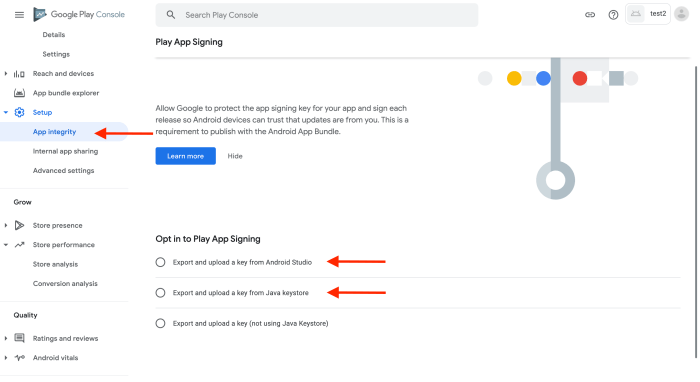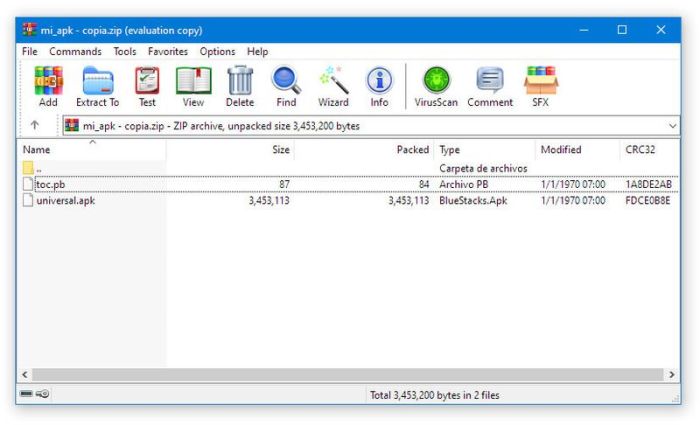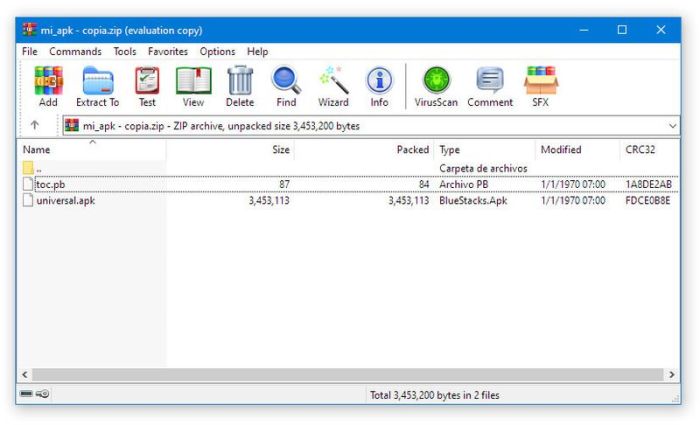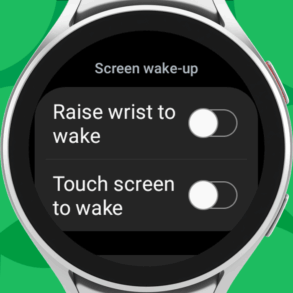Google APK app bundles package format Play Store offers a revolutionary approach to distributing Android apps. This format optimizes app size and performance, significantly impacting user experience on the Google Play Store. Understanding its structure, benefits, and integration with the Play Store is crucial for developers aiming to deliver high-quality apps to a vast user base.
App bundles leverage advanced techniques to package different app components, enabling the Play Store to deliver only the necessary files to the user’s device. This dynamic approach minimizes download sizes, leading to faster installation times and reduced data consumption. The Play Store handles this complex process efficiently, allowing developers to focus on app quality rather than managing various APK versions.
Introduction to App Bundles
App bundles are a revolutionary approach to distributing Android applications. They represent a significant shift from the traditional APK format, offering substantial improvements in app size, installation speed, and overall user experience. This new approach has become essential for developers aiming to deliver efficient and streamlined apps to users on diverse devices.App bundles are designed to optimize the delivery of app assets to different devices.
Instead of a single monolithic APK, app bundles allow developers to package their app’s resources in a more modular fashion. This modularity enables a more efficient and targeted delivery of app components based on the specific features and requirements of each device. The resulting benefit is a smaller and faster installation process for users, a crucial factor in attracting and retaining users in today’s mobile-first world.
App Bundle Advantages Over Traditional APKs
The traditional APK format has limitations in terms of optimizing the app for different device configurations. App bundles address these limitations by providing a dynamic approach to delivering app components. This dynamic delivery results in a significant improvement in both the size and the speed of app installation, ultimately improving the user experience.
Structure and Components of an App Bundle
An app bundle is not a single file; instead, it’s a collection of files organized in a specific structure. This structure facilitates the targeted delivery of app resources. The key components within an app bundle are:
- App Components: These represent the various elements of an application, such as the application code, resources, and assets.
- Resource Sets: Resource sets are designed to adapt the application’s components to different device configurations, such as screen size, density, and API level.
- Package Manifest: This manifest file describes the contents of the bundle, allowing the system to select the appropriate resources for a specific device.
These components work together to provide the user with the optimal app experience, regardless of the device they are using.
Ever wondered how Google handles APK app bundles for the Play Store? It’s a fascinating format, and while I’m not a Google engineer, I do find the ongoing innovation in hardware really interesting too. For example, a new Thunderbolt 5 dock has entered the market, another thunderbolt 5 dock joins the battle , pushing the boundaries of data transfer speeds.
Back to the topic, Google’s packaging system for apps is incredibly efficient, especially considering the sheer volume of apps on the Play Store.
Comparison of APK and App Bundle Characteristics
The following table highlights the key differences between traditional APKs and app bundles:
| Characteristic | APK | App Bundle | Description |
|---|---|---|---|
| Size | Generally larger due to including resources for all possible device configurations | Smaller, as it only includes the necessary resources for a specific device | Bundles deliver only what’s needed, reducing overall size. |
| Installation Process | Complete download and installation of the entire APK | Downloads only the resources required by the specific device | Faster installation for users due to reduced download size. |
| Optimization | Limited optimization for different devices | Optimized for diverse device configurations | Bundle approach results in more targeted resource delivery. |
| Management | Difficult to manage resources for different devices | Easy to manage and update resources for diverse devices | Streamlined management for developers. |
Google Play Store Integration

The Google Play Store is crucial for the distribution and management of Android applications. App bundles, by streamlining the download process, significantly enhance the user experience and developer workflow. This section delves into how the Play Store handles app bundles, from upload to optimization, and their impact on users.The Play Store’s architecture is designed to intelligently process app bundles, ensuring users download only the necessary components.
This dynamic approach, unlike traditional APKs, optimizes storage space and download times. The Play Store leverages its powerful infrastructure to manage the intricacies of app bundle delivery, enabling seamless updates and installations.
Play Store Handling of App Bundles
The Play Store’s robust infrastructure facilitates the handling of app bundles. It meticulously analyzes the bundle’s contents, identifies the components required for a specific device configuration, and then dynamically packages the optimized APK for download. This ensures the user receives only the necessary components, reducing download size and time.
Upload and Distribution Process
Uploading app bundles to the Play Store follows a straightforward process. Developers upload the app bundle file, along with the necessary metadata. The Play Store then processes the bundle, creating optimized APKs tailored for different device configurations. The store meticulously verifies the bundle’s contents, ensuring compatibility and security. Finally, the optimized APKs are made available for download by users.
Play Store Optimization Strategies
The Play Store employs sophisticated optimization techniques to maximize the efficiency of app bundles. These strategies include analyzing device characteristics, tailoring APKs for specific configurations, and optimizing download sizes. This intelligent optimization process minimizes the size of the downloaded package, reducing download times and improving the user experience. Furthermore, the Play Store continuously refines its algorithms to ensure optimal performance across a broad range of devices and configurations.
Impact on User Experience
The use of app bundles results in a significant improvement in the user experience. Users experience faster downloads, as only the necessary components are downloaded. The reduced download size also enhances the experience on devices with limited data connectivity. The streamlined update process ensures that users always have the latest version of the app, optimized for their device.
Furthermore, the reduced download size minimizes the impact on battery life and storage space.
Play Store Support for App Bundles Across Android Versions
| Android Version | Play Store App Bundle Support | Description | Details |
|---|---|---|---|
| Android 8.0 (Oreo) and above | Full Support | The Play Store fully supports app bundles for all features and functionalities. | All necessary features for handling app bundles are available. |
| Android 7.0 (Nougat) | Limited Support | While the Play Store supported app bundles, there may be limitations or specific use cases for certain functionality. | Check the specific Play Store documentation for details on limitations. |
| Android 6.0 (Marshmallow) and below | No Support | App bundles are not supported on these versions. | Users on these older versions will experience the standard APK download process. |
Package Format Details
App bundles, a game-changer for app distribution on Google Play, offer a sophisticated package format designed for optimized performance and user experience. This format streamlines the download process, enabling users to get only the necessary components of an app, leading to faster installations and smaller storage footprints. The structured approach also paves the way for more efficient updates, a significant benefit for developers and users alike.The app bundle format cleverly leverages the varying needs of different devices and their capabilities.
By providing multiple APKs, it ensures the optimal APK is delivered, ensuring the app runs smoothly and efficiently. This dynamic approach allows the Play Store to tailor the download to the specific device, resulting in a more personalized and seamless user experience.
App Bundle Structure
The app bundle’s core structure is a container holding various components tailored for different device configurations. This modular design ensures that only the necessary resources are downloaded, minimizing download sizes and maximizing download speeds. The bundle is essentially a collection of APKs and other resources.
Types of Resources in an App Bundle
App bundles include a variety of resources beyond the standard APK. These resources cater to different screen sizes, resolutions, and device configurations. This includes alternative assets for different languages and support for different device types.
- APK files: The core of the app bundle, containing the app’s executable code and essential components. Different APKs are optimized for various devices, allowing for dynamic adaptation to device capabilities.
- Resource files: These include images, layouts, strings, and other assets necessary for the app’s visual presentation and functionality. Different versions of these files are packaged based on the screen density or specific device characteristics.
- Native libraries: Code libraries for specific platforms, like OpenGL, often needed for advanced functionalities or performance enhancements. These are also packaged separately for efficient delivery.
- Data files: Files such as databases, configuration settings, and other data specific to the app are packaged for easy access and integration.
Compression Techniques
Optimized compression techniques are critical for minimizing the overall size of the app bundle. This significantly improves download speeds and reduces storage space requirements.
- ZIP compression: Standard compression method used to pack various resources into a single bundle, reducing the overall file size.
- Advanced compression algorithms: These techniques further reduce file size by leveraging more sophisticated compression methods tailored to different resource types.
- Adaptive compression: This approach adjusts the compression level based on the specific resource, resulting in optimal compression and minimal loss of quality.
Performance and User Experience Enhancements
The app bundle format directly impacts user experience. By optimizing the download process and delivery, users can install and use the app much faster.
- Faster downloads: Users receive only the necessary components, leading to quicker downloads and installations, particularly on slower connections.
- Smaller storage footprint: Optimized resource delivery allows users to install apps with minimal storage impact, improving their overall device space management.
- Improved app performance: The app bundle format allows for tailored resource delivery based on the device, ensuring smooth operation and optimal performance.
File Types in an App Bundle
The app bundle format includes a diverse range of file types, each playing a specific role in the overall functionality of the app.
| File Type | Description | Example | Purpose |
|---|---|---|---|
| APK | Android Package Kit, the core executable file. | com.example.myapp.apk | Contains the core app code. |
| PNG, JPG, GIF | Image files for UI elements. | splash_screen.png | Visual representation of the app. |
| XML | Markup language for defining layouts, resources, and configurations. | activity_main.xml | Defines app structure and UI elements. |
| JSON | Data interchange format for configurations and data. | settings.json | Stores configurations and app data. |
Development Considerations
App bundles offer a significant advancement in app development, streamlining the process of delivering optimized versions of your app to users. This approach is crucial for maximizing download speeds and improving user experience. Understanding the intricacies of building and preparing app bundles is vital for developers aiming to leverage their benefits.App bundles are not simply a replacement for APKs; they represent a paradigm shift in how apps are packaged and distributed.
Google’s APK app bundle package format for the Play Store is a fascinating development. It’s all about optimizing app sizes, and I’m particularly interested in how this impacts the launch of new foldable phones like the Xiaomi Mix Fold 3. Xiaomi Mix Fold 3 launch events highlight the need for streamlined app delivery. Ultimately, this improved format is crucial for a smoother and more efficient user experience on the Play Store, regardless of device type.
This transition requires a change in mindset and development approach. Developers need to embrace the new format and understand the implications on their workflow and codebase.
Building and Preparing App Bundles
The process of building app bundles involves packaging different APKs into a single bundle file. This bundle file then contains various APKs tailored for different devices and configurations. This process is automated through the Android build system. Developers should ensure that their build system is configured correctly to generate app bundles effectively.
Tools and Technologies for App Bundle Development, Google apk app bundles package format play store
Several tools and technologies aid in the development process. The Android Studio build system is crucial for generating app bundles. It automatically handles the compilation and packaging of resources, enabling developers to focus on application logic. Furthermore, the Android Gradle Plugin is essential for configuring the build process, allowing fine-grained control over the app bundle generation. The Play Console provides tools for managing and monitoring app bundles.
Converting Existing APKs to App Bundles
Converting existing APKs to app bundles is often a gradual process. Developers can incrementally add support for app bundles in their existing projects. This usually involves adjusting the project’s build configurations within Android Studio. It’s essential to test thoroughly after each conversion step to ensure the app functions correctly. There might be a need to adjust code that relies on specific APK structures, which requires careful examination.
Handling Different Screen Sizes and Densities
App bundles enable delivering optimized assets for various screen sizes and densities. The system automatically selects the appropriate resources based on the target device. Developers should ensure that their application assets (images, layouts, etc.) are appropriately optimized to support various screen resolutions. This involves using appropriate scaling techniques for images and layouts. A common approach is to utilize vector drawables for icons and other scalable assets.
Testing and Debugging App Bundles
Thorough testing and debugging are crucial for ensuring app bundle functionality. A systematic approach is recommended.
| Test Case | Description | Tools/Methods | Expected Outcome |
|---|---|---|---|
| Device Compatibility | Verify app performance across various devices and configurations. | Emulators, physical devices, Play Console | App functions correctly on diverse devices. |
| Performance Testing | Measure download times and app startup time for various devices. | Performance testing tools | Optimal download and startup times. |
| Resource Optimization | Evaluate the effectiveness of resource optimization. | Android Profiler, performance testing tools | Efficient resource utilization and smooth user experience. |
| User Experience Testing | Assess user experience through real user feedback and testing. | User testing tools, feedback collection | Positive user feedback and smooth user experience. |
Optimization Strategies
App bundle optimization is crucial for a positive user experience on Google Play. Efficient optimization minimizes download times, reduces storage requirements, and ensures smooth performance across diverse devices and screen sizes. By employing effective strategies, developers can significantly improve their app’s appeal and success on the Play Store.
Ever wondered how Google handles APK app bundles for the Play Store? It’s a complex process, but Google’s recent commitment to the Pixel brand, as seen in Android 12’s bold new design, demonstrates a renewed focus on user experience. This could translate to more refined app distribution practices, including the APK app bundle format, making app development and distribution smoother and potentially more efficient for developers.
Ultimately, a strong Pixel brand benefits the entire ecosystem, including the Play Store and its app bundle structure.
Resource Size Minimization
Optimizing resource size, particularly images and videos, is vital for reducing the app bundle’s overall footprint. Large files directly contribute to longer download times and increased storage consumption. Employing techniques to compress these files without compromising quality is key. JPEG and WebP formats, for instance, offer better compression ratios compared to PNG.
- Image Optimization: Utilize appropriate image formats like WebP, which provides superior compression compared to PNG, especially for images with smooth gradients. Employ tools that analyze and compress images automatically, ensuring quality is maintained while significantly reducing file sizes. Use a consistent image format throughout the app for consistency and easier management.
- Video Optimization: Optimize videos by reducing resolution and bitrate without sacrificing clarity. Choose appropriate codecs that provide good compression. Convert videos to smaller formats like H.264 or H.265, while maintaining quality.
- Resource Pre-processing: Leverage tools and techniques for pre-processing images and videos to achieve higher compression ratios. This can include resizing, cropping, and format conversion.
Compression Algorithm Selection
The choice of compression algorithm can significantly impact the app bundle size. Different algorithms offer varying levels of compression and may affect the quality of the final product. For example, lossless compression methods preserve the original quality but may not achieve the same reduction in size as lossy compression.
- Lossless vs. Lossy Compression: Evaluate the impact of lossy compression techniques on visual assets. Lossless compression preserves the original data, ideal for critical data, while lossy compression trades some data for significant size reduction, suitable for images where quality is not critical.
- Adaptive Compression: Employ adaptive compression techniques that automatically adjust the level of compression based on the characteristics of the data. This dynamic approach ensures optimal size reduction without sacrificing quality.
- Zip and other archive formats: Leverage the appropriate archive formats, like ZIP, for compressing resources and further optimizing the bundle size. Ensure the format aligns with the expected file type.
Code and Asset Optimization for Various Devices
Adapting code and assets to different device characteristics, including screen sizes, resolutions, and hardware capabilities, is essential for a smooth user experience.
- Vector Graphics: Use vector graphics (SVG) instead of raster images (PNG, JPG) for scalable images that adapt to various screen sizes without loss of quality. This minimizes the need for multiple image variants.
- Density-independent Resources: Employ density-independent resources for maintaining consistent display quality across various screen densities. This approach reduces the number of assets needed for different device resolutions.
- Dynamic Scaling: Utilize dynamic scaling techniques for adapting layouts and UI elements to various screen sizes and orientations. This approach ensures optimal visual presentation on different devices.
App Bundle Resource Management
Effective resource management ensures that resources are used efficiently, reducing redundancy and optimizing storage space.
| Resource Type | Optimization Strategy | Example | Benefits |
|---|---|---|---|
| Images | Use appropriate formats (WebP, SVG), compress, and optimize for different screen densities. | Convert PNG to WebP; use SVG for scalable icons. | Reduced file size, improved performance. |
| Videos | Optimize resolution and bitrate; use appropriate codecs (H.264/5). | Reduce video resolution; convert to H.265. | Reduced file size, improved playback performance. |
| Code | Use appropriate libraries and frameworks for efficient code execution; minimize unnecessary code. | Use efficient libraries; remove unused code. | Improved performance, reduced memory footprint. |
| Layout | Use adaptive layouts and dynamic scaling to adjust for different screen sizes and orientations. | Use responsive design principles. | Consistent appearance across devices. |
Troubleshooting and Common Issues
App bundles, while offering significant advantages for app distribution, can present certain challenges during development and deployment. Understanding common pitfalls and their solutions is crucial for smooth integration and successful app release. This section details troubleshooting strategies and provides a comprehensive guide to resolve common issues.
Installation Issues
Installation problems with app bundles often stem from discrepancies between the bundle’s structure and the target device’s capabilities. Incompatible libraries, missing dependencies, or incorrect configuration can lead to installation failures. Addressing these issues requires careful examination of the bundle’s components and ensuring compatibility with the intended user base.
- Missing Dependencies: Ensure all required libraries and dependencies are included in the bundle. Verify that the necessary files are present in the correct directories and that the app’s manifest correctly references these components.
- Incorrect Manifest Configuration: Review the application’s manifest file for any errors. Verify that the bundle’s components are correctly declared and referenced. Pay close attention to permissions, activities, and other essential elements.
- Device Compatibility Issues: Some devices may not support the specific features or architecture of the app bundle. Thoroughly test the bundle across a variety of devices to identify and address any compatibility problems.
Execution Errors
Execution errors can manifest as crashes, exceptions, or unexpected behavior. These problems are often related to runtime issues, such as conflicts between different modules or missing resources.
- Runtime Errors: Carefully examine the logs for runtime errors. Identify the specific error messages and trace the source to pinpoint the cause. Common errors include missing resources, exceptions, and compatibility problems between modules. Use debugging tools to understand the context and location of the error within the app bundle’s code.
- Module Conflicts: If different modules in the bundle rely on conflicting versions of libraries or APIs, conflicts can arise. Ensure that all modules are compatible and that the versions of dependencies are properly managed.
- Resource Issues: Verify that all required resources (e.g., images, strings, layouts) are present in the bundle and are accessible to the appropriate modules. Inconsistent or missing resources can lead to errors during execution.
Troubleshooting Guide
This table Artikels a systematic approach to troubleshooting app bundle issues.
| Issue | Possible Cause | Troubleshooting Steps | Solution |
|---|---|---|---|
| Installation failure | Missing dependencies, incorrect manifest | Verify all dependencies are present, review manifest for errors, check for device compatibility | Correct missing dependencies, fix manifest errors, test on various devices |
| Execution crash | Runtime errors, module conflicts, resource issues | Examine logs for error messages, check for conflicting libraries, verify all resources are present and accessible | Resolve runtime errors, update libraries, ensure proper resource management |
| App not launching | Missing configuration files, invalid paths | Check for required configuration files, verify paths to resources are correct | Ensure configuration files are present, fix paths if necessary |
Future Trends and Predictions

App bundles, introduced by Google, have significantly altered the landscape of Android app development. Their ability to streamline distribution and optimize app size has made them a critical component of the modern app ecosystem. Looking ahead, the future of app bundles is likely to involve even greater integration with evolving Android features and development tools.The ongoing evolution of Android’s platform features will likely drive refinements to the app bundle format.
We can anticipate improvements in the handling of dynamic features, such as adaptive layouts, and support for emerging hardware capabilities, leading to a more seamless and efficient user experience.
Potential Development Directions
App bundles are expected to evolve to support more sophisticated functionalities, including better integration with the Android ecosystem’s evolving features. For example, the support for new hardware, like foldable devices, will require modifications in the app bundle format to ensure compatibility and efficient resource utilization. Furthermore, advancements in machine learning and AI could lead to automated optimization strategies for app bundles, adapting to specific user devices and network conditions in real time.
Evolution of the App Bundle Format
The format is likely to incorporate enhanced metadata and descriptive data to allow more intelligent handling of app resources by the Play Store. This could enable more granular control over which resources are bundled for specific devices, potentially leading to even smaller app sizes. The integration of more advanced compression algorithms and resource management techniques will further optimize app download times and enhance overall user experience.
Improvements in Optimization Strategies
Future optimization strategies for app bundles will likely incorporate machine learning algorithms to analyze app usage patterns and device characteristics. This would allow for more tailored resource selection and bundling, resulting in smaller app sizes for specific device profiles. Dynamic resource loading, where parts of the app are downloaded on demand, is also a promising area for improvement, potentially reducing initial download times.
Impact on Future Android Releases
App bundles are expected to become even more integral to future Android releases. They are anticipated to be deeply integrated into the Android development tools, simplifying the process for developers. The introduction of new features and APIs will likely be designed with app bundles in mind, encouraging their widespread adoption. The use of app bundles will also be incorporated in the design of new Android operating system versions, optimizing the way apps interact with the system.
Predicted Changes to the App Bundle System
| Category | Description | Impact | Example |
|---|---|---|---|
| Format Enhancements | Inclusion of metadata for dynamic resource loading, specific device compatibility information, and enhanced compression algorithms. | Reduced app size, faster download times, and improved compatibility. | App bundles could include information about the screen resolution of a device, enabling the selection of appropriate UI elements during download. |
| Optimization Techniques | Implementation of machine learning algorithms to dynamically select resources for specific device configurations, based on usage patterns. | Tailored app sizes and reduced download times, leading to improved user experience. | An app using machine learning could identify the user’s typical usage patterns and download only the necessary features. |
| Integration with Android Features | Deep integration with future Android APIs and features, promoting app bundle use for new functionalities. | Seamless support for new Android features and better app performance. | A new Android feature for augmented reality could be supported by app bundles. |
| Development Tools | Improved support in Android Studio and other development tools for app bundle creation and management. | Streamlined app development and easier maintenance of bundles. | Simplified steps in Android Studio to create app bundles, potentially automating the process. |
Ultimate Conclusion: Google Apk App Bundles Package Format Play Store
In conclusion, the Google APK app bundles package format Play Store represents a significant advancement in Android app distribution. By understanding the package format, optimization strategies, and integration with the Play Store, developers can deliver exceptional user experiences. This detailed exploration equips developers with the knowledge needed to leverage app bundles effectively, enhancing both app performance and user satisfaction.
Future trends suggest an increasing reliance on this technology.












